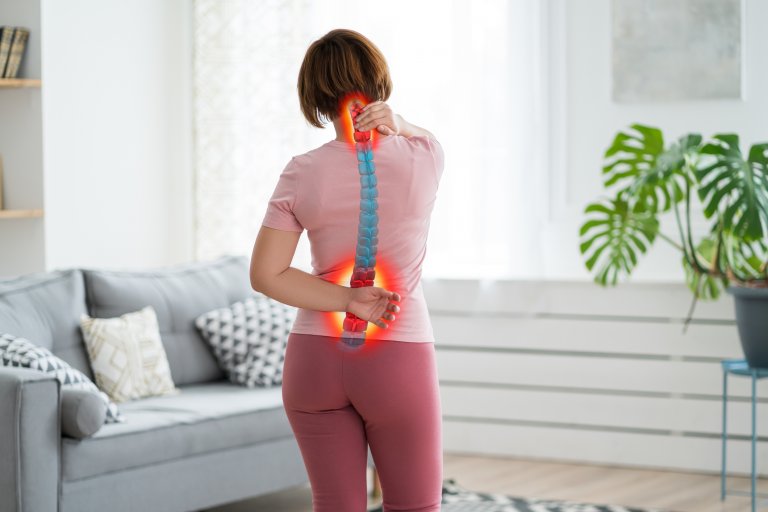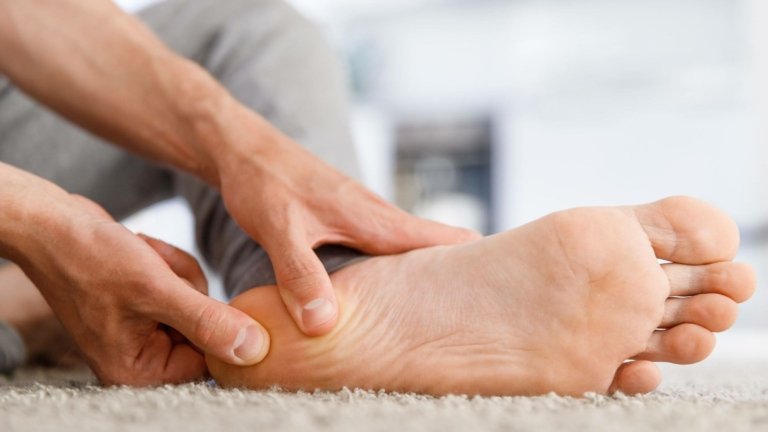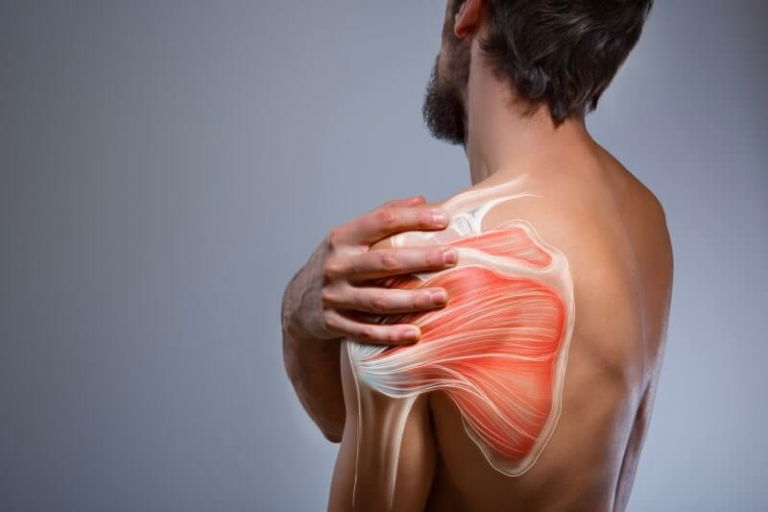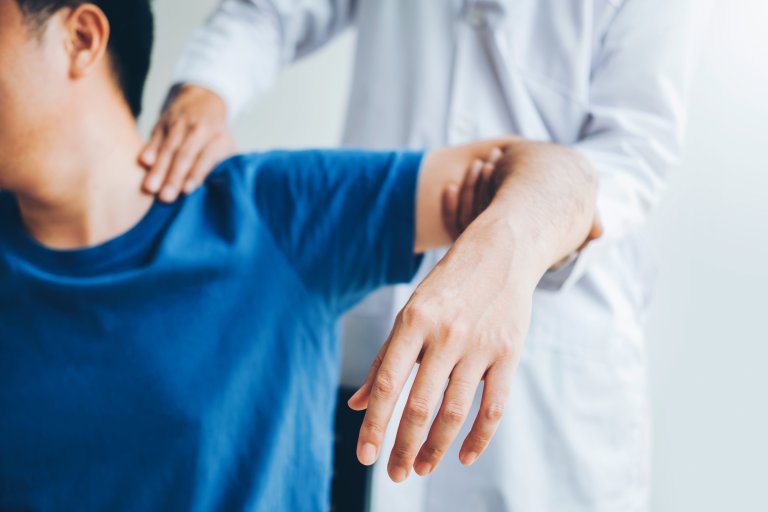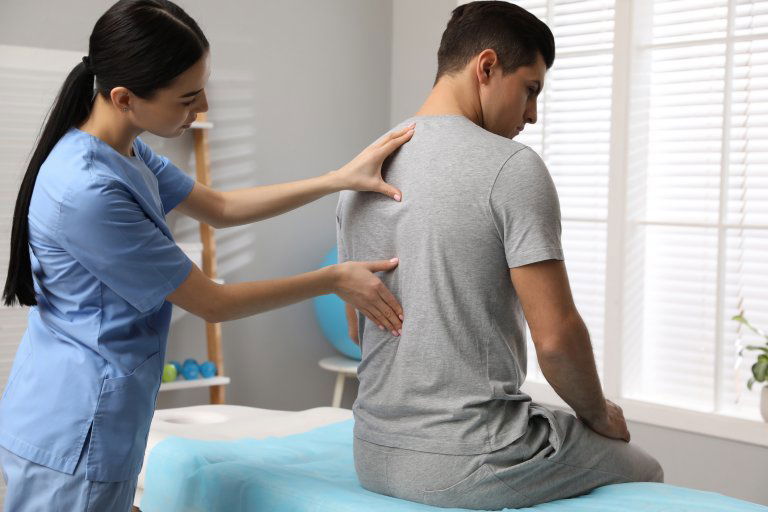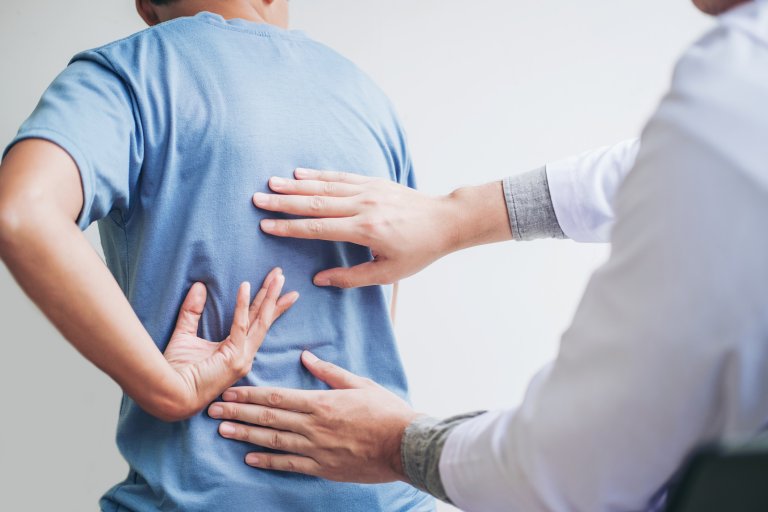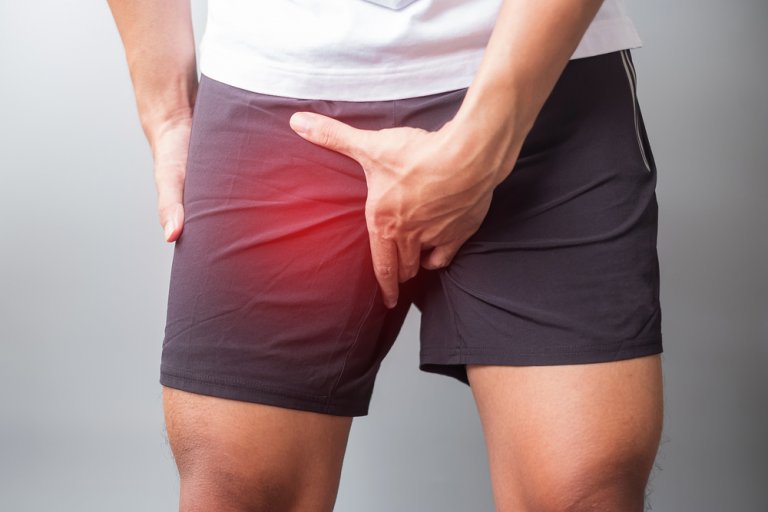Lateral hip pain affects 1.8 out of 1000 individuals per year. In 82% of cases it affects women between 35 and 70 years of age. The condition is more common in women compared to men due to the different shape of the pelvis and different hormonal status. Excessive body weight is also an important contributory factor (5).
Hip lateral pain, trochanteric bursitis, gluteal tendinopathy, greater trochanteric pain syndrome are just a few of the technical terms that sound quite intimidating. They all refer to conditions that are related to problems in the hip. Read this article to the end and we hope to equip you with the necessary information to better understand the pathology of GTPS. In the following, we will try to answer the questions: what does the English term “greater trochanteric pain syndrome” (GTPS) mean, how to recognise it and how it is treated.
What is GTPS or greater trochanteric pain syndrome?
The term “greater trochanteric pain syndrome” (GTPS) is found in the English literature. It is a term for a syndrome that covers several different causes of lateral hip pain. It could be said to be a kind of umbrella term. In Slovenia, the term trochanteric bursitis is often used, which narrowly refers to inflammation of the bursa. And, to be a bit caricature, sometimes anyone with lateral hip pain is diagnosed with trochanteric bursitis. But today we are more careful and more precise, because we know that bursitis can indeed be present, but it can start either because of tendonitis or because of a tear in the tendon, it can be a popping syndrome in the hip, it can be calcinations, it can be a problem in the bony system and so on and so forth.

Moreover, according to recent research, the fluid within the bursa causing the problem is thought to exist as a result of previous inflammation in the surrounding tendons, rather than primary inflammation in the bursa itself (1). For this reason, in the following, we will use the English abbreviation GTPS.
The pelvis is composed of three bones, which meet at a depression at the outer end. This is the socket where the femoral head joins and together they form the hip joint (3). Slightly inferior to the femoral head, there are two knobs called the greater and lesser trochanters (4).
The hip joint is a ball-and-socket joint, which allows a great deal of mobility in all planes. The hip joint can flex and extend, abduct and adduct, and externally and internally rotate. The actual range of movement is also dictated by the position of the knee due to the muscles travelling across both joints (3).
The bursae are fluid-filled ‘pad-like’ structures located between the soft tissues of the tendons and the bone. Their function is to reduce friction and allow the tendon or muscle to glide better during movement.
In total, 19 muscles are involved in hip movement. Six (4) are attached to the greater trochanter of the femur:
- The gluteus medius and gluteus minimus muscles, which stabilise the pelvis and provide hip abduction. The gluteus minimus also helps with internal rotation of the hip. The bursae are located under the adductors of these two muscles and, as mentioned above, reduce the friction created when soft tissue comes into contact with hard bone.
- Four of the six muscles of the hip that perform external rotation. The best known of these is the piriformis muscle.

The TFL (tensor fascial latae) muscle, which lies over the gluteus medius and minimus muscles and ascends to the iliotibial tract (ITB), is also worth mentioning. The ITB runs longitudinally along the lateral part of the thigh, ascending just below the knee, and has an important influence on what happens in the hip. One of the most important muscles for hip movement is the gluteus maximus, which is also the largest muscle in the body.
The body system can be thought of as a tower of wooden blocks – we can take them out for a while, but at some point the structure collapses. It is the same with the body. It has a remarkable capacity for adaptation, but when a state lasts too long or is too intense or out of balance, it is felt in the whole kinetic chain or in the disrupted movement patterns of the whole body.
Causes of GTPS or greater trochanteric pain syndrome
GTPS or greater trochanteric pain syndrome can be caused by tendinopathy of the above-mentioned gluteus medius and gluteus minimus muscles. It can also be caused by tears in these two tendons, a possible cause is hip popping syndrome or an abnormality in the functioning of the iliotibial tract.
GTPS or greater trochanter pain syndrome can be caused by (4):
- tendon overload,
- incomplete or insufficient healing of the tendon,
- compression of the tendons, which occurs due to non-symmetrical action of all the muscular structures in the hip. E.g. weak hip abductors, e.g. gluteus medius, cause stronger activity in the opposite direction – the direction of adduction and thus more tension of the ITB, resulting in compression of the G.medius and G.minimus tendons at the greater trochanter,
- prolonged hip flexion position. Pattern observed during sitting causing tendon compression and increased tension in the ITB,
- muscle deficits of the G.medius and G.minimus muscles and increased tension of the ITB also contribute to poor pelvic control, which also causes compression on the gluteal tendons,
- tears of the G.medius and G.minimus tendons are an often overlooked cause of GTPS. They can be acute, but usually we are talking about degenerative microtears that accumulate and compound over time,
- popping hip syndrome affects 5-10% of the general population. It is most commonly seen in dancers and professional athletes, but is also present in the general population. Extra-articular presentation is relevant for the development of GTPS or greater trochanteric pain syndrome, which means that the anterior part of the gluteus maximus muscle or part of the ITB “jumps” over the greater trochanter of the femur, causing an inflammatory process in the underlying bursa. Muscle deficits and thus imbalances are often present (2),
- individuals with GTPS or greater trochanter pain syndrome often also have low back pain or osteoarthritis of the hip. GTPS is also more common in those with ITB syndrome and/or osteoarthritis of the knee joint (2).
What are the symptoms of GTPS or greater trochanter pain syndrome?
GTPS typically presents with pain on the lateral side of the hip. The area is extremely sensitive to touch and the pain may spread down the lateral thigh towards the knee or back towards the buttock. The pain is described as stabbing and intense, and increases with the juxtaposition of hip abduction and external rotation – i.e. the movement of trying to place the ankle of the leg on the opposite knee.

It is also aggravated when lying on the affected side, and sometimes lying on the unaffected side is problematic, where the painful leg falls slightly downwards, causing compression. The pain is also expressed during activity, when the leg is stressed – walking on flat ground or stairs, running, sometimes just standing is enough. Pain is also aggravated by prolonged sitting or sitting cross-legged (4).
How do we arrive at a diagnosis of GTPS or greater trochanteric pain syndrome?
In most cases, GTPS is a clinical diagnosis. Imaging is necessary when another cause is suspected or when the individual is not responding well to treatment. X-ray imaging is reasonable when bone-related pathologies are suspected. MRI and ultrasound help to diagnose soft tissue injuries – i.e. tendinopathies, tears, thickening of the bursa, muscle atrophy and degeneration (4).
Treatment of pain syndrome of the greater trochanter
The first choice of treatment is physiotherapy, which is successful in 90% of all cases, provided that the start of treatment is not delayed too long. If the pain is too severe, anti-inflammatory drugs are used, and injectable corticosteroids are also an option. In the latter method, although the short-term effects are promising (3-4 months), the long-term effects are not superior to the “wait and see” approach – i.e. doing nothing (5).

The winning combination in the treatment of greater trochanteric pain syndrome is education and exercise
Modern treatment methods put patient education and properly structured and targeted kinesiotherapy at the forefront. Only through exercise can the real cause of the condition – usually tendon problems and muscle deficits – be influenced (5). The main goals of kinesiotherapy include progressive loading from the initial phase onwards, reducing the compressive forces acting on the hip, improving muscle balance – the emphasis is on strengthening the muscles of the gluteal region and, of course, simultaneously influencing the potential contributing factors to GTPS – weight loss and prolonged sitting (2).
What other physiotherapeutic approaches can be used to support the rehabilitation process of greater trochanteric pain syndrome
The most commonly used instrumental physiotherapy technique is shock wave therapy (SWT). According to a 1-year study, its use is more effective than corticosteroid injection. The best combination is the use of UGVs and exercise (4). UGVs work by producing changes in tissue pressure by direct mechanical force, resulting in increased cellular metabolic activity and increased local blood flow.
Manual therapy also helps to improve the condition of the greater trochanter pain syndrome
If the cause of GTPS is increased friction, myofascial release techniques will help to relax the soft tissues, which will improve the condition. Manual techniques are also useful when an individual is experiencing reduced mobility and restriction in the joint itself – whether in the lumbar spine, hip, knee or ankle. Manual therapy can improve the biomechanics of the joint and consequently reduce soft tissue friction in the lateral aspect of the hip (6).

What can you do right this moment if you are experiencing symptoms of GTPS or greater trochanteric pain syndrome?
Pay attention to the activities where the pain occurs and try to limit them. Try to avoid stairs and walking uphill. Avoid prolonged sitting and if you have a sedentary job, make sure you take breaks from sitting. Also avoid sitting cross-legged. When standing, be careful not to stand with all your weight on the affected leg. When lying on your side, try using a pillow placed between your knees to maintain a neutral hip position.
It is very important to book a consultation with a specialist and to get involved in a rehabilitation programme that is specific to you. Only with targeted exercise and guidance, and supportive instrumental therapy, can we help you successfully.
- Fearon, A., 2015. Gluteal Tendinopathy: Integrating Pathomechanics and Clinical Features in Its Management. JOSPT, 45(11): 910-924.
- Ganderton, C., Semciw, A., Cook, J., Moreira, E. & Pizzari, T.. 2018. Gluteal loading versus sham exercises to improve pain and dysfunction in postmenopausal women with greater trochanteric pain syndrome: a randomized controlled trial. Journal of Women’s Health. 1;27(6), 815-29.
- Hlebš, S., Slakan Jakovljević, B. & Klauser, M., 2014. Manualna terapija – sklepna mobilizacija udov testiranje in terapija. Univerza v Ljubljani, Zdravsvtena fakulteta, pp 86-87.
- Lin, C.Y. & Fredericson, M., 2015. Greater Trochanteric Pain Syndrome: An Update on Diagnosis and Management. Curr Phys Med Rehabil Rep, 3(1). 60-66.
- Mellor, R., Bennell, K., Grimaldi, A., Nicolson, P., Kasza, J. & Hodges, P., 2018. Education plus exercise versus corticosteroid injection use versus a wait and see approach on global outcome and pain from gluteal tendinopathy: prospective, single blinded, randomised clinical trial. BMJ, 361:k1662. doi: 10.1136/bmj.k1662.
- Wyss, J. & Patel, A., 2013. Therapeutic Programs for Musculoskeletal Disorders. United States of America: Bradford & Bigelow Printing.





